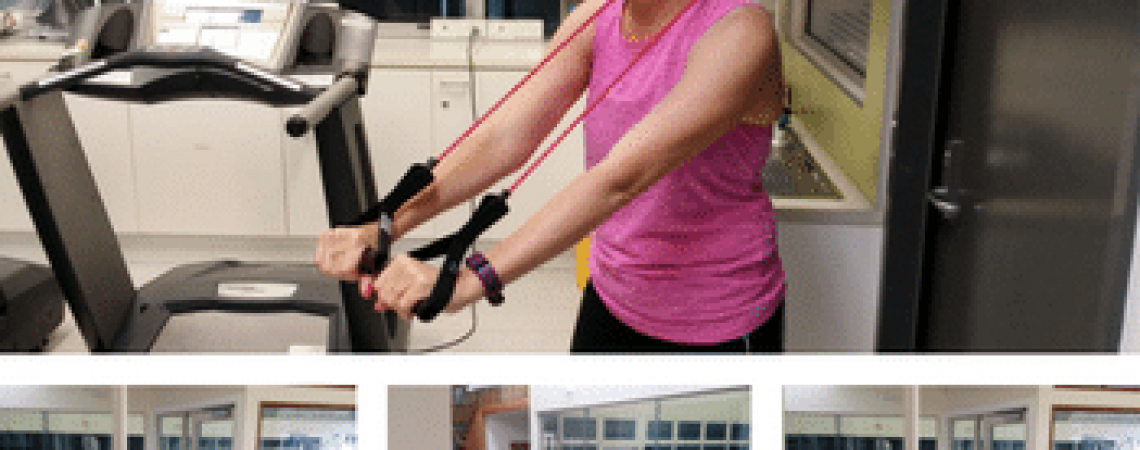
BREAST CANCER AND EXERCISE
Researchers at Queensland University of Technology in Brisbane are helping to improve the lives of women with advanced breast cancer though exercise. Here’s how….
We all know exercise is an important part of a healthy life. But many people are unaware of the enormous benefits that exercise can provide to women with breast cancer, both during and following treatment. Remarkably, regular exercise has also shown to reduce the risk of being diagnosed with breast cancer in the first place, and may improve survival after diagnosis. (Ref 1 and 2)
BENEFITS OF EXERCISE DURING AND AFTER BREAST CANCER TREATMENT
Many studies have shown that being physically active and performing regular exercise can reduce the risk of developing breast cancer by up to 80% in both premenopausal and postmenopausal women (ref 3). There’s also plenty of research which shows that being physically active and performing regular exercise after being diagnosed with breast cancer can improve quality of life, reduce fatigue, improve fitness, lean body mass, strength, endurance and reduce body fat( ref 4, 5). The benefits are not just physical – exercise has also shown to help women with breast cancer reduce depression and anxiety, and improve confidence and self-esteem (ref 4, 6). Other studies have also shown some amazing results which include improved chemotherapy rates among women who performed resistance exercise during chemotherapy (ref 7) and improved survival rates among women who performed moderate levels of exercise after being diagnosed compared with patients not performing any exercise (ref 8).
Overall, exercise plays a vital role in the lives of women with breast cancer. When it comes to exercise, any amount of light-to-moderate exercise is better than nothing (with more generally better than less) and many patients can benefit from simple, cost effective forms of exercise such as walking and home-based resistance exercise using minimal (if any) equipment. Ideally, breast cancer patients and survivors should aim to exercise for 30 minutes per day, three to five days a week, performing a combination of aerobic and resistance exercises. However, depending on current health status and treatment-related side effects, commencing with as little as 10 minutes of light walking each day can be beneficial for many patients.
Resistance exercises are also an important part of exercise after diagnosis. These exercises can include bodyweight exercises, or exercises using dumbbells and resistance bands. As shown in many studies involving women with breast cancer, resistance exercise can improve strength, bone mineral density (reducing the risk of osteoporosis), lean body mass, reduce depression and improve overall health and wellbeing4,5,6. Yet, many people think that to get benefits, resistance exercise needs to be performed at a gym lifting heavy weights and using expensive machines. But a current study being conducted at Queensland University of Technology in Brisbane has found some extraordinary findings among women with advanced breast cancer, called the S.A.F.E (Safety and feasibility of exercise) study. In particular, progressive upper-body resistance exercises using the MB sculpting tubes 2-3 times a week has helped patients in the S.A.F.E study to regain upper-body function during and after breast cancer surgery and radiation therapy, with many patients also experiencing benefits such as improved overall quality of life and improved strength and energy during chemotherapy! Most importantly, use of the MB sculpting tubes has enabled patients safely perform their resistance exercise in the comfort and convivence of their own homes. This has also allowed patients to exercise whilst juggling current treatments (e.g., chemotherapy and radiation therapy), regular hospital appointments and work, personal and family responsibilities. Due to the success and popularity of the sculpting tubes among the participants, the team at MB Active are supporting the study by providing MB sculpting free of cost to all participants.
The S.A.F.E study is currently looking for participants. For more information about the study, or if you are interested in participating, please contact the S.A.F.E team via email at safe@qut.edu.au or phone (07) 3138 3016.
With many health conditions, prevention is always the key. Taking steps towards a healthy lifestyle by engaging in regular, structured exercise and healthy eating will help you to become healthy, and help you to reduce the risk of health conditions such as breast cancer.
References
1. McNeely, M.L., et al., Effects of exercise on breast cancer patients and survivors: a systematic review and meta-analysis. Cmaj, 2006. 175(1): p. 34-41.
2. Ogunleye, A.A. and M.D. Holmes, Physical activity and breast cancer survival. Breast Cancer Res, 2009. 11(5): p. 106.
3. Lee I, Oguma Y. Physical activity. In: Schottenfeld D, Fraumeni JF, editors. Cancer Epidemiology and Prevention. 3rd ed. New York: Oxford University Press, 2006. McTiernan A, editor. Cancer Prevention and Management Through Exercise and Weight Control. Boca Raton: Taylor & Francis Group, LLC, 2006.
4. Chung, C., et al., Systematic Review of Exercise Effects on Health Outcomes in Women with Breast Cancer. Asian Nursing Research, 2013. 7(3): p. 149-159.
5. Meneses-Echávez, J.F., E. González-Jiménez, and R. Ramírez-Vélez, Effects of Supervised Multimodal Exercise Interventions on Cancer-Related Fatigue: Systematic Review and Meta-Analysis of Randomized Controlled Trials. BioMed Research International, 2015. 2015: p. 328636.
6. Battaglini, C.L., et al., Twenty-five years of research on the effects of exercise training in breast cancer survivors: A systematic review of the literature. World Journal of Clinical Oncology, 2014. 5(2): p. 177-190.
7. Courneya, K.S., et al., Effects of aerobic and resistance exercise in breast cancer patients receiving adjuvant chemotherapy: a multicenter randomized controlled trial. J Clin Oncol, 2007. 25(28): p. 4396-404.
8. Holmes MD, Chen WY, Feskanich D, Kroenke CH, Colditz GA. Physical activity and survival after breast cancer diagnosis. Journal of the American Medical Association 2005; 293(20):2479–2486).
